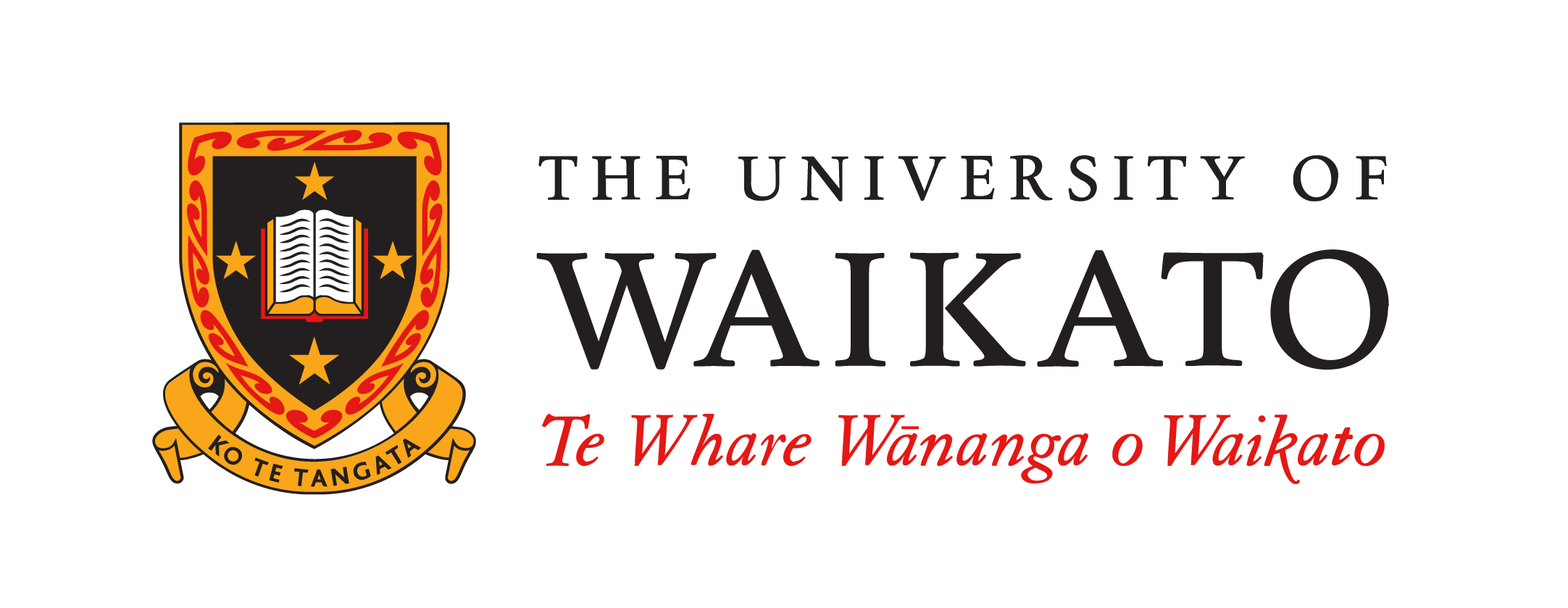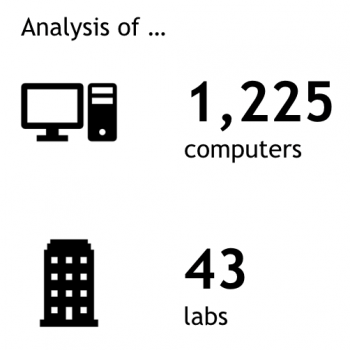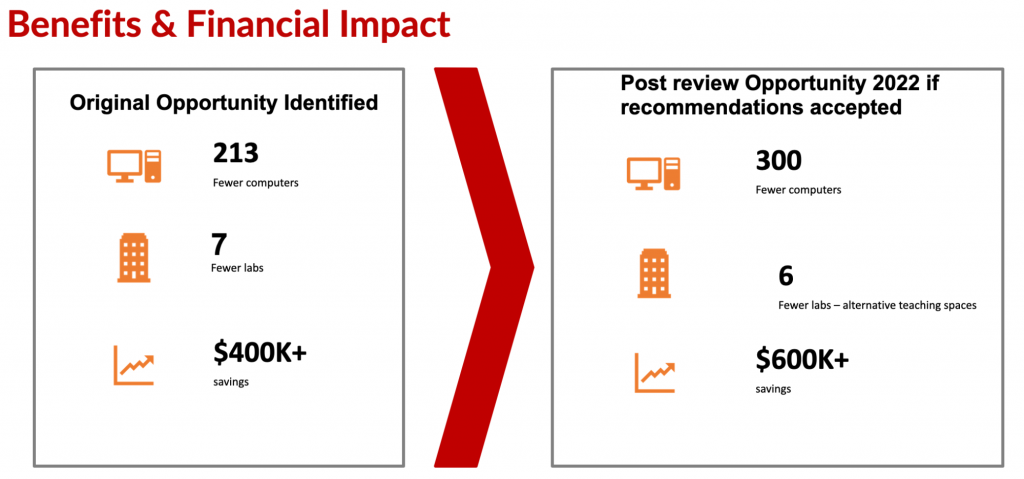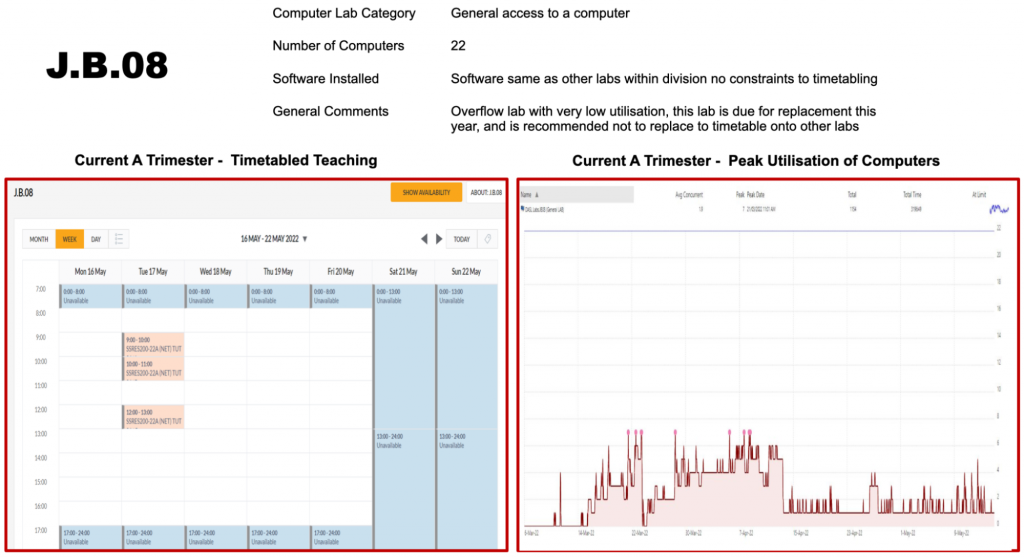The University of Waikato projects over $1M Savings
The team’s workflow, project management, and commitment make massive ITAM cost savings possible
Like many higher-ed institutions, The University of Waikato has experienced drastically changing usage patterns in computer labs and classrooms over the past few years. Despite IT’s suspicion that usage was trending down significantly from previous years, they had no simple way to get an accurate view of exactly how hardware and software resources were actually being used. They came to Sassafras with questions, a commitment to answering them, and a mission: to tailor future IT purchases to meet actual needs, and to save money where possible in the process. The solution was AllSight.
The University of Waikato
The University of Waikato is a medium-sized public university with around 10,000 students spread across two campuses in the Waikato & Bay of Plenty regions in the Central North Island of New Zealand. The University was founded in 1964 and has a motto of “For the People”, which sits at the heart of everything they do. The University has a 5-star QS score, and Waikato is ranked at “250 out of the world’s best 1,500 universities.” According to their website, what sets Waikato apart is its forward-thinking approach to education and research. This proactive, “future-focused” mindset also applies to their business practices as a university. The University of Waikato has a number of notable alumni, including the former Prime Minister of New Zealand, Jacinda Ardern, business leaders, including Craig Nevill-Manning, Head of Engineering at Sidewalk Labs, and sporting and cultural icons, such as Olympians, and writers.

IT Budgeting at Waikato Before AllSight
Prior to the coronavirus pandemic, Waikato always relied on requests from faculty, staff, and students to determine what IT resources they needed to purchase. This might sound familiar: more computers over here, additional software over there, and always more, more, more. The challenge is that requests were made based on conditions during peak hours when exams were looming, stress was high, and labs were full. Without reliable usage stats that give IT administrations and procurement teams a clear picture of real usage, how could they ascertain whether resources were being allocated efficiently? Furthermore, without real-time availability information and demand forecasting for labs, it wasn’t a surprise that everyone was showing up at the same time, and coming to the conclusion that more resources were needed.
Why Waikato Chose AllSight
Before Sassafras, The University IT Asset Management posture was limited, with Assets recorded in the University Central Asset database, but there was little way outside of physical audits to know who was using devices. Utilization tracking for hardware and software was not possible with existing systems. Faced with fresh budgetary constraints and the need to regularly refresh an ever-growing fleet of aging equipment, Waikato came to the conclusion that they needed more efficiency in their IT Asset Management workflow. That’s how they found AllSight.
As part of a bigger project to standardize End User Deployments and Management, an ITAM stream was developed to identify requirements for ITAM at the University and scan the market to find suitable solutions. As the University was both budget-constrained and developing its ITAM skillset & capabilities, tools like Snow were immediately ruled out as being cost-prohibitive, and unlikely to realize the desired outcomes in a timely manner. The University was keen for a product that took account of some of the unique requirements of Academic software and use cases, so a product with good standing in the academic sector was key. The University met with both shortlisted Vendors Certero, and Sassafras, along with reference sites for both, and after a competitive selection process, Sassafras was chosen as the University of Waikato’s toolset for ITAM, as it offered an approachable learning curve, great feature set, and good level of return on investment.
More than just usage tracking, AllSight is a complete, single-pane-of-glass ITAM solution incorporating purchase records, software discovery and normalization, license management, hardware inventory management, login reporting, computer lab availability maps, and remote access. Optimized to consume minimal client, network, and server resources, AllSight also offers powerful integrations with enterprise management tools like TeamDynamix, ServiceNow, Jira, Jamf, Intune, PaperCut, and Active Directory. Azure, Google, and Okta SSO integrations are also available.

How Waikato Used AllSight
When Waikato bought AllSight, they knew what they were looking for, and they’d found the right tool for the job, but there was still a lot of work to do. They met with the technical team at Sassafras many times during the planning and deployment phase of the project, asking questions and receiving personal configuration assistance and training tailored to their needs. After setting up the server and deploying the client — a quick and painless process that requires no third party database applications or anything but a Windows, Mac, or Linux OS — they were ready to go. Login and usage data immediately started flowing into the system, as the Sassafras team worked with Waikato to implement dynamic and automatic AD OU mapping, federated admin authentication, purchase record imports, scheduled usage reports, KPI dashboard customization, and a 12 hour Master Administrator Training course for their primary users.
The Results
When sufficient time had passed for a meaningful amount of data collection, they used the built-in tools to “better understand the level of actual demand for undergraduate computer labs, identify potential areas of capital and operational expenditure savings and operational efficiency without impacting on the quality of teaching, providing a better student experience with up to date technology, [and] ensure we are utilizing our PC fleet investment with reduced funding with current capital constraints.”
Yes we love AllSight. we’re getting great data out of it, sometimes it’s a bit overwhelming to know exactly where to focus next. But for us, there are 2x big focuses. One internal, which is Computer Lab Utilization, and one external, which is software utilization data to purchase decision-makers/budget holders.
—Hamish Hamilton, ICT Procurement Lead, University of Waikato

As of the publication date of this case study, Waikato has only just begun to feel the impact of AllSight. Quoting directly from their early analysis of hardware usage:
- Across Tri A 2021, on average, undergraduate computer lab utilization was 16% across the University
- There were also very low levels of instances where more than 80% of computers were used concurrently in a computer lab
- For instances with high concurrent usage, it is highly feasible that minor timetabling changes will smooth out any demand peaks
- Low utilization and low concurrent usage is clearly demonstrated
- Computer Labs are timetabled by Schools, to utilize what specialized software has been licenced and deployed to each lab and then handed to central timetabling, which means some labs may only be used one or two days per week by specific students
- The findings of this analysis show initial opportunities to improve efficiency. These savings are supported by data insights
- The first opportunity lies in the 2022 Desktop Capital Refresh program, where several labs are up for equipment renewal
- It is proposed that the majority of lab computers up for renewal in 2022 are not renewed, but discontinued, with consultation across Academic Divisions and Timetabling.
- This could result in a reduction of 213 computers across 7 labs at the Hamilton Campus.
- Even with this change, overall undergraduate computer lab utilization increases by a modest 5% to 21%, with large amounts of free capacity still in the University’s computer lab network
- This proposal is estimated to save $440k in ITS costs (equipment purchase, installation, and ongoing support) for 2022

Focusing on the “low-hanging fruit” of hardware usage prior to a major buy, Waikato has already identified an easy opportunity to save a lot of money, and they haven’t even begun to analyze software usage stats!
- To demonstrate future possibilities, we examined a scenario of further reducing the number of computers by 500 PCs. This increased utilization to 43%
- A reduction of 500 computers to ~450 across the Hamilton and Tauranga campuses (65% reduction from current state) should be considered in the context of changing technology habits over the past decade
- Laptop ownership amongst students has increased significantly. Centralized computer labs, along with 24/7 access labs ensures equity for those who need to or prefer to use computers on campus
- This proposal would could deliver another $1.1M in ITS savings, again excluding further savings from maintenance of physical buildings and space
- Review financial impact associated with 3 year replacement cycle to ensure undergraduate Labs provide best possible student experience with reduced fleet
It’s given us as an institution a chance to put data together to show actual lab usage, and use this to look at the wider picture, becoming not just an ITS exercise, but one that spans multiple divisions and teams across the University, such as Property, Student Services, Timetabling, Teaching & Learning, every Academic Division, and University Leadership. To investigate things like enabling spaces for Student BYOD usage; what might virtualization of software for student use look like; how might timetabling change to centrally timetable computer labs; where on our campuses should our computer labs be; where should students be directed for computers for self-directed study/course work. It’s an exciting chance to take a holistic future-focused view, and potentially make a massive computer lab model change, with Student Experience at its heart.
—Hamish Hamilton, ICT Procurement Lead, University of Waikato

The cumulative savings Waikato expects to reap from AllSight are hard to calculate. Buying fewer computers and software products is one thing, but there are also soft cost savings associated with managing a much smaller fleet of computers, including deployment, maintenance, image management, electricity, and other kinds of overhead. When students and end users begin to use AllSight’s computer lab availability maps, for example, Sassafras customers often find that the availability of real time lab usage data and demand forecasts smooth out peak usage, as users “automatically” avoid peak hours and choose better times to use limited resources.
Take Control of Your IT Budget with AllSight
30 years in the making, Sassafras AllSight gives you cradle to grave visibility and control over all of your IT assets. Compatible with Windows, Mac, ChromeOS, and Linux, our lightweight client allows you to track and report on how all of your computers are being used, while lifecycle management tools help you keep track of monitors, projectors, network equipment, and any other kind of IT hardware, from purchase to retirement. To learn more, contact us at sales@sassafras.com, or call us at +1-603-643-3351.